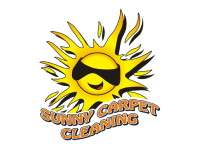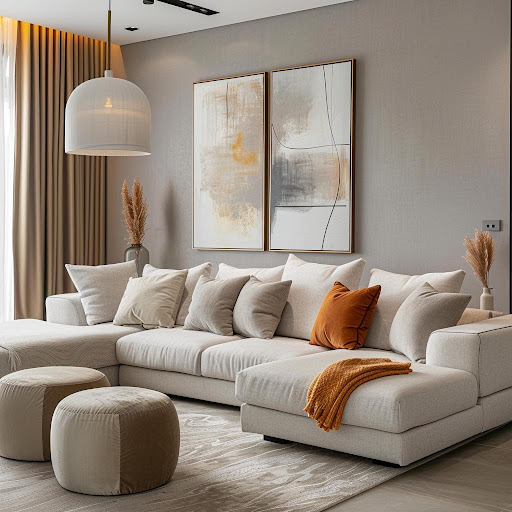Your upholstered furniture isn’t just a collection of fabric and frame; it’s where memories are made, where comfort resides, and where your personal style truly shines within your home in Littleton, CO. From that cozy sofa perfect for movie nights to the elegant armchair that completes your living room, these pieces represent a significant investment in comfort and aesthetics. However, with daily use, your upholstery faces an onslaught of dirt, dust, spills, and allergens that can quickly diminish its beauty and value.
The good news is that with a proactive approach to upholstery cleaning and care, you can preserve the vibrancy, extend the life, and maintain the hygiene of your cherished furniture for years to come. This article will provide you with essential tips for everyday maintenance, guide you through immediate spill responses, and help you understand when to call upon the meticulous expertise of professionals like Sunny Carpet Cleaning to protect your investment and foster a healthier home environment.
Why Your Upholstery Demands Regular Care: More Than Just Appearance
Understanding why your upholstery needs consistent care goes beyond simply wanting it to look nice. It’s about maintaining a healthy home, protecting your financial investment, and preserving the very essence of your furniture’s comfort.
The Hidden Accumulation: A Micro-World of Grime
Upholstered furniture acts like a giant sponge, absorbing everything that comes into contact with it or floats in the air. Over time, a surprising amount of unseen grime accumulates:
- Dust and Dirt:Everyday dust, tracked-in soil from shoes, and airborne particles settle deep into fabric fibers and crevices. This isn’t just unsightly; it’s abrasive, causing wear.
- Skin Cells and Body Oils: From lounging pets to family movie nights, your furniture collects shed skin cells, hair, and body oils, which can lead to discoloration and a buildup of odors.
- Food Crumbs and Spills:The inevitable dropped snack or spilled drink creates sticky residues that attract even more dirt and can lead to microbial growth if not properly addressed.
- Pet Dander:For homes with furry friends, pet dander and hair quickly embed themselves into upholstery, becoming a significant source of allergens.
Impact on Indoor Air Quality: Your Upholstery as an Allergen Trap
Just as carpets do, upholstery acts as a giant air filter, trapping allergens and pollutants that would otherwise circulate in your breathing air. While this filtering action is initially beneficial, without regular cleaning, the furniture becomes a reservoir for these irritants.
- Allergen Hotspot:Dust mites, pollen (tracked in from outside), pet dander, and mold spores thrive in upholstery. As you sit down or move around, these allergens become airborne, triggering allergic reactions, asthma symptoms, and general respiratory discomfort for sensitive individuals in your home.
- Odor Absorption:Upholstery absorbs cooking odors, pet smells, and even the scent of tobacco smoke, making your entire home feel less fresh and clean, even if other surfaces are spotless.
Aesthetic Deterioration: Fading, Matting, and Dullness
Neglected upholstery doesn’t just get dirty; its very appearance changes, making your furniture look tired and old prematurely.
- Fading:Prolonged exposure to sunlight can cause fabric colors to fade unevenly, diminishing the vibrancy of your upholstery.
- Matting and Crushing: Constant pressure from sitting and abrasive dirt can cause fabric fibers to become matted and crushed, especially in high-use areas, leading to a worn-out appearance.
- Overall Dullness: A layer of embedded soil and dust dims the fabric’s original sheen, making even relatively new furniture appear old and uninviting.
Extending Lifespan: Preventing Premature Wear
Upholstery isn’t cheap. Regular care is key to protecting this significant investment. The abrasive action of trapped dirt combined with constant use can accelerate wear and tear, leading to tears, thinning fabric, and structural damage that might necessitate costly repairs or premature replacement of your beloved furniture.
Daily & Weekly Upholstery Care Essentials: The Foundation of Longevity
Consistent, simple care practices are your first and most effective line of defense against the daily wear and tear on your upholstered furniture. These habits can significantly reduce the need for intensive cleaning and preserve your furniture’s appearance.
Regular Vacuuming: Your Most Potent Weapon
This is arguably the single most important step in daily and weekly upholstery cleaning.
- Importance:Vacuuming removes loose dirt, dust, crumbs, and pet hair before they become embedded deep within the fabric fibers. Once dirt is ground in, it becomes much harder to remove and acts as an abrasive, accelerating wear.
- Tools:Use your vacuum cleaner’s upholstery attachment (a smaller, often flat nozzle or one with a brush) or a crevice tool.
- Frequency:Aim to vacuum your upholstered furniture weekly, or even more frequently for high-use pieces or homes with pets and children. Pay special attention to crevices, seams, and areas where pet hair tends to accumulate.
- Technique: Use slow, overlapping strokes, working systematically across all upholstered surfaces. For cushions, remove them and vacuum both sides, as well as the frame beneath.
Fluffing and Rotating Cushions: Maintaining Shape and Even Wear
This simple act can make a huge difference in how your furniture looks and wears over time.
- Why: Cushions naturally compress and lose their shape in high-use spots. Fluffing helps redistribute the filling, maintaining the cushion’s loft and comfort.Rotating (flipping over and/or moving to different seats) ensures that wear and tear are distributed evenly across all cushions, preventing one area from looking significantly older or more worn than another.
- Frequency:Fluff and rotate removable cushions daily or weekly, especially for frequently used furniture.
Protecting from Sunlight: Preventing Fading and Fabric Degradation
Sunlight, while lovely, is a silent enemy of upholstered fabrics.
- Problem: Prolonged exposure to direct sunlight, especially UV rays, can cause irreversible fading, discoloration, and even degradation of fabric fibers, making them brittle and weak over time.
- Solution:Position furniture away from direct, unfiltered sunlight. Use curtains, blinds, or UV-filtering window films to protect your upholstery. Rotate furniture if possible to ensure even exposure (or lack thereof) to light.
Spot-Checking & Light Dusting: Addressing Surface Dust
A quick visual check and gentle dusting can prevent minor issues from becoming major ones.
- Dusting: Use a soft, lint-free cloth or a microfiber cloth to gently wipe down upholstered surfaces to remove surface dust that hasn’t settled deep into the fibers.
- Spot-Checking: Make it a habit to quickly scan your upholstery for any new spills or marks after use. Addressing them immediately is key.
Immediate Spill Response: A Critical First Line of Defense
Spills are inevitable, but your immediate reaction can be the difference between a minor incident and a permanent stain. Quick action, combined with the right technique, is crucial.
The “Blot, Don’t Rub” Rule: Understanding Why
This is the golden rule of upholstery cleaning and stain removal.
- Why Blot:Rubbing a spill, especially with force, can spread the stain to a larger area, push the substance deeper into the fabric fibers, or even damage the fabric by abrading the fibers or causing them to stretch or pill.
- How to Blot: Use a clean, white, absorbent cloth, paper towel, or sponge. Gently press down on the spill, working from the outside edge inwards to contain the spill and absorb the liquid. Lift the cloth, fold it to a clean section, and repeat until no more liquid transfers. Avoid colored cloths, as their dyes can transfer to your upholstery.
Quick Action is Key: Preventing Stains from Setting
Time is of the essence when it comes to spills.
- Problem:The longer a spill sits on upholstery, the more it penetrates the fibers, dries, and chemically bonds with the fabric, making it exponentially harder to remove.
- Solution: Respond immediately. The faster you act, the higher the chance of complete stain removal.
Basic DIY Spot Cleaning: (Cautionary, Emphasizing Limitations)
For very fresh, simple spills (like water or some non-oily beverages), a gentle DIY approach might be possible, but always with extreme caution.
- Using Plain Water vs. Mild Eco-Friendly Solutions: For most spills, a clean, damp cloth (moistened with plain water) is the safest first step after blotting. For tougher, but still fresh, stains, a very diluted solution of mild, pH-neutral, eco-friendly dish soap (one drop in a cup of water) or a certified eco-friendly spot remover can be used.
- Testing in Inconspicuous Areas: ALWAYS test any cleaning solution (even plain water on delicate fabrics) on a hidden part of the upholstery (e.g., back or underside of a cushion, behind the skirt) before applying it to the visible stain. Check for colorfastness, shrinkage, or watermarks once the test area is dry.
- Avoiding Over-Wetting: Apply cleaning solution sparingly to the cloth, not directly to the upholstery. Too much moisture can saturate the padding, leading to slow drying, mildew growth, and watermarks that are often worse than the original stain.
Knowing When to Stop: Preventing Self-Inflicted Damage
Perhaps the most important DIY tip is recognizing your limits. If a stain isn’t coming out easily, or if you’re unsure about the fabric, stop immediately. Over-zealous rubbing, using too much product, or applying the wrong solution can cause permanent damage, making the professional’s job much harder or impossible.
Understanding Your Upholstery Fabric: The Key to Proper Care
Before attempting any cleaning, whether DIY or professional, it’s absolutely critical to understand the type of fabric your upholstery is made from. This information dictates the appropriate cleaning methods and solutions.
Reading Care Tags (W, S, WS, X): Your Upholstery’s DNA
Most upholstered furniture comes with a care tag, often located under a cushion or on the underside of the frame. These tags contain crucial codes:
- W (Wet Clean):This code means the fabric can be cleaned with water-based solutions. This is the most common code and allows for steam cleaning or hot water extraction.
- S (Solvent Clean / Dry Clean Only): This indicates that only solvent-based cleaners (dry cleaning solutions) should be used. Water can cause shrinking, staining, or damage.
- WS (Wet or Solvent Clean):This versatile code means the fabric can handle either water-based or solvent-based cleaning.
- X (Vacuum Only): This is the most delicate code, meaning the fabric cannot be cleaned with any liquid. It should only be vacuumed. Attempting to wet clean “X” fabrics will likely cause irreversible damage.
Always consult this tag. If the tag is missing, worn, or unreadable, do not attempt any liquid cleaning. Consult a professional immediately.
Common Fabric Types & General Care Considerations:
Even with care tags, a basic understanding of common upholstery fabrics is beneficial:
- Natural Fibers (Cotton, Linen, Silk, Wool):
- Cotton/Linen:Durable but can absorb spills readily and may wrinkle. Generally “W” code.
- Silk: Highly delicate. Often “S” or “X” code. Prone to water spots and shrinking. Requires very specialized care.
- Wool:Durable, naturally stain-resistant, but can shrink or felt with hot water. Often “W” or “WS” code, but requires careful temperature control.
- Synthetics (Polyester, Nylon, Olefin):
- Generally more durable and stain-resistant than natural fibers. Often “W” or “WS” code. Good for high-traffic areas. Can sometimes attract oily stains.
- Specialty Fabrics (Velvet, Microfiber):
- Velvet:Can be delicate, easily crushed, and prone to watermarking. Care depends on fiber content (natural vs. synthetic velvet). Often “S” or “WS”.
- Microfiber: Very durable and stain-resistant. Often “W” or “WS”. Can be cleaned quite effectively.
When to Call the Professionals: Beyond DIY Limitations
While daily care and immediate spill response are crucial, there comes a point where professional upholstery cleaning becomes not just beneficial, but essential. Recognizing these signs will save you from bigger problems down the line.
Deep-Seated Grime and Overall Soiling
If your upholstery looks dull, dingy, or has lost its vibrancy despite regular vacuuming and light spot cleaning, it’s a clear sign of deep-seated grime. This accumulated dirt cannot be removed by surface cleaning. Professional equipment penetrates deep into the fibers to extract this embedded soil.
Stubborn Stains and Lingering Odors
Some stains, like wine, pet accidents, ink, or grease, are simply beyond the scope of DIY. They may require specialized pH-balancing solutions, heat, or specific chemical reactions that only professionals can safely apply. Similarly, if your furniture has persistent musty smells, pet odors, or lingering cooking odors, it indicates that the source of the odor is deep within the upholstery or padding, requiring powerful professional extraction and deodorization, not just masking.
Delicate or “Dry Clean Only” Fabrics
For furniture with an “S” or “X” code on the care tag, attempting any water-based cleaning is a recipe for disaster. Professionals have the knowledge, specialized solvents, or dry cleaning methods specifically designed to clean these delicate fabrics without causing shrinkage, discoloration, or damage. Even for “W” code fabrics, if they are particularly valuable or delicate (e.g., antique silk), a professional is the safest bet.
Allergy and Health Concerns
If family members or guests in your Littleton, CO home experience increased allergies, asthma symptoms, or general respiratory discomfort, your upholstered furniture could be a major contributing factor. Professional upholstery cleaningmethods are designed to remove a significant percentage of deeply embedded allergens like dust mites, pet dander, pollen, and mold spores, leading to a noticeable improvement in indoor air quality and a healthier living environment.
Regular Maintenance for Longevity and Appearance
Even without obvious stains or odors, regular professional upholstery cleaning(typically every 12-24 months, depending on usage and household conditions) is vital.This proactive approach prevents heavy soil buildup, keeps colors vibrant, and extends the overall life of your furniture, protecting your investment. Think of it like a regular oil change for your car—it prevents major problems.
Busy Lifestyles: Convenience and Peace of Mind
For busy individuals and families in Littleton, CO, finding the time and energy for thorough upholstery care can be challenging. Calling professionals offers unparalleled convenience and peace of mind. You save time and effort, avoid the stress of potential DIY mistakes, and can trust that your valuable furniture is in expert hands, delivering a truly deep and lasting clean.
The Unmatched Value of Professional Upholstery Cleaning
When you choose professional upholstery cleaning, you’re not just buying a service; you’re investing in expertise, specialized equipment, and a commitment to protecting your home’s assets and health.
Expert Fabric Assessment
A reputable professional begins with a thorough inspection of your upholstery. With over 25 years of experience, a professional like Sonny can instantly identify your fabric type, assess its condition, locate problem areas, and choose the perfect cleaning method and solutions. This meticulous attention to detail prevents damage and ensures optimal results, a level of precision rarely achievable with DIY.
Advanced Eco-Friendly Solutions
Professionals committed to health and sustainability, like Sunny Carpet Cleaning, utilize cutting-edge, eco-friendly cleaning solutions.These are often plant-based, non-toxic, biodegradable, and powerful enough to break down grime and stains effectively without leaving behind harmful chemical residues or irritating fumes. This ensures a clean that’s safe for your family, pets, and the environment.
State-of-the-Art Equipment
Professional cleaners employ specialized equipment that consumer rentals simply cannot match. High-powered hot water extraction machines (often truck-mounted) provide deep cleaning with intense suction, removing maximum dirt and moisture. This advanced equipment ensures deep penetration and thorough extraction, preventing over-wetting, which is a common DIY pitfall that can lead to mold and mildew.
Comprehensive Stain & Odor Elimination
Professionals have access to a vast array of specialized pre-treatments, spot removers, and deodorizers tailored for specific types of stains and odors. They understand the chemistry required to neutralize pet odors at the source, break down tough grease stains, or remove dyes without damaging the fabric, achieving results that leave your upholstery truly fresh and spotless.
Healthier Indoor Environment
The deep cleaning power of professional methods effectively removes a far greater percentage of dust mites, pet dander, pollen, bacteria, and mold spores from your upholstery than any DIY method. This translates directly into a significant improvement in your home’s indoor air quality, reducing triggers for allergies and asthma and promoting a healthier living space.
Protecting Your Investment
By regularly removing abrasive dirt and maintaining fabric integrity, professional upholstery cleaningsignificantly extends the lifespan of your furniture.It keeps colors vibrant, prevents matting, and preserves the structural integrity of the fabric, ultimately delaying the need for costly furniture replacement and maintaining the aesthetic value of your home.
Convenience and Peace of Mind
Hiring professionals means you save valuable time and effort, avoiding the guesswork and potential frustrations of DIY. You gain peace of mind knowing that your valuable furniture is being cared for by experienced experts. Many reputable services, like Sunny Carpet Cleaning, also offer a satisfaction guarantee, ensuring you’re completely happy with the results.
Conclusion: Your Partner in Preserving Upholstery Beauty
Your upholstered furniture provides comfort and style, embodying countless memories within your Littleton, CO home. While diligent daily and weekly care forms a crucial foundation for its longevity, it’s the professional touch that truly unlocks and preserves its lasting beauty, hygiene, and value. From tackling hidden allergens and stubborn stains to revitalizing faded fabrics, specialized professional upholstery cleaning methodsoffer a level of cleanliness and protection that DIY efforts simply cannot match.
At Sunny Carpet Cleaning, we are passionate about helping you protect your cherished home investments. With over 25 years of hands-on experience, Sonny and his dedicated team bring unparalleled expertise and meticulous attention to detail to every piece of upholstery. We utilize state-of-the-art equipment and genuinely eco-friendly, non-toxic solutions to deliver a deep, residue-free clean that’s safe for your family, your pets, and the environment. Our commitment to personalized care and quality means we stand by our work with a satisfaction guarantee—if you’re not absolutely happy, we’ll make it right.
Choose Sunny Carpet Cleaning for a truly meticulous, eco-friendly, and long-lasting upholstery cleaning experience that only an owner-led service with decades of dedication can provide.
Ready to see your upholstery restored to its vibrant best and enjoy a healthier home environment in Littleton, CO? Contact Sunny Carpet Cleaning today for a free estimate or consultation!



